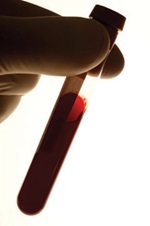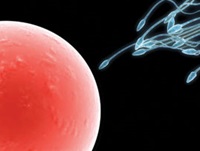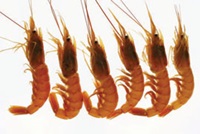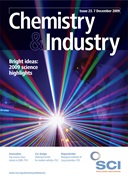On the origins of life with RNA replicators
 Two hundred years after Darwin was born, and 150 years after the publication of On the origin of species, scientists may have come a step closer to explaining how life on Earth began. In the RNA world hypothesis, RNA is thought to have preceded proteins as both the hereditary material and catalyst for biochemical reactions. Until now, however, scientists have struggled to provide a convincing demonstration of how this might work. But in a paper in Science in February (doi:10.1126/science.1167856), researchers at the Scripps Research Institute in California, US, reported making pairs of RNA replicators that continue to produce more copies of themselves seemingly indefinitely, in the absence of any other materials (C&I 2009, 2, 5). Not only that, but they could also ‘mutate’ and ‘evolve’ to produce new replicator pairs better adapted to their environment, thereby making these RNA molecules capable of continuous replication, mutation and evolution – necessary functions of all life on earth.
Two hundred years after Darwin was born, and 150 years after the publication of On the origin of species, scientists may have come a step closer to explaining how life on Earth began. In the RNA world hypothesis, RNA is thought to have preceded proteins as both the hereditary material and catalyst for biochemical reactions. Until now, however, scientists have struggled to provide a convincing demonstration of how this might work. But in a paper in Science in February (doi:10.1126/science.1167856), researchers at the Scripps Research Institute in California, US, reported making pairs of RNA replicators that continue to produce more copies of themselves seemingly indefinitely, in the absence of any other materials (C&I 2009, 2, 5). Not only that, but they could also ‘mutate’ and ‘evolve’ to produce new replicator pairs better adapted to their environment, thereby making these RNA molecules capable of continuous replication, mutation and evolution – necessary functions of all life on earth.
A force to control catalysis
 Chemists in the Netherlands scored a first this spring, by using mechanical force to control catalytic activity. The researchers from Eindhoven University of Technology in the Netherlands joined long polymer chains to N-heterocyclic carbene (NHC) ligands, wrapped around silver or ruthenium ions, to create their catalytic system. To activate the catalyst, they blasted the system with ultrasound to break the NHC ligand-ion bonds, so freeing the metal catalyst to catalyse transesterification and olefin metathesis reactions (Nature Chemistry doi: 10.1038/nchem.167). The finding is tipped to pave the way for future ‘self-healing’ polymer coatings that repair themselves when damaged, and which could find applications in aeroplanes and wind turbines.
Chemists in the Netherlands scored a first this spring, by using mechanical force to control catalytic activity. The researchers from Eindhoven University of Technology in the Netherlands joined long polymer chains to N-heterocyclic carbene (NHC) ligands, wrapped around silver or ruthenium ions, to create their catalytic system. To activate the catalyst, they blasted the system with ultrasound to break the NHC ligand-ion bonds, so freeing the metal catalyst to catalyse transesterification and olefin metathesis reactions (Nature Chemistry doi: 10.1038/nchem.167). The finding is tipped to pave the way for future ‘self-healing’ polymer coatings that repair themselves when damaged, and which could find applications in aeroplanes and wind turbines.
Inhalable vaccine for measles
In September, it was announced that clinical trials for the first dry powder measles vaccine will begin in March 2010 in India (C&I 2009, 18, 7). The new vaccine – a dry powder that can be inhaled directly into the lungs – is being developed by Robert Sievers from the University of Colorado, US, and the Serum Institute of India (SII), Pune. If it passes safety and efficacy tests, the Pune-based vaccine manufacturer is looking at a demand of 400m doses of measles vaccine annually. Measles kills more than 200,000 children each year in India.
$1000 genome moves closer
Genome sequencing took a huge leap forward in April when researchers reported a new technology that promises to slash costs and dramatically speed up analyses (Nature Nanotechnology 2009, doi: 10.1038/nnano.2009.12). Developed by UK bioscience firm Oxford Nanopore Technologies, together with researchers at Oxford University, the method depends on a nanopore isolated from the membrane of Staphylococcus bacteria. As discrete nucleotides pass through this microscopic pore, they transiently bind to a cyclodextrin adapter molecule that researchers engineered into the structure, generating a change in electrical current unique to each nucleotide. Known as Bayley sequencing (BASE), the new sequencing technology can even distinguish between normal and methylated bases – important in development and also seen in some some cancers. With a 99.8% accuracy rate, BASE is comparable with current sequencing methods and brings researchers closer to the long sought-after goal of a $1000/ human genome sequence.
A medical role for mass spectrometry
 Mass spectrometry may one day have a big role in medicine thanks to the development of a variant of the technique capable of analysing all of the chemicals in a cell from the tiniest speck of blood. Researchers at the Max-Planck Institute in Germany and at ETH Zurich in Switzerland reported in July the development of a modified mass spectrometry method called matrix-assisted ionisation/laser desorption (MAILD), which allows them to identify small as well as larger blood metabolites in blood almost immediately after a patient has given a blood sample (PNAS 2009, 106, 10092). Conventional techniques to analyse metabolites require mL of sample and can take days. As well as faster disease diagnoses, the researchers are hopeful that it should speed up metabolomic studies to characterise all of an organism’s metabolites.
Mass spectrometry may one day have a big role in medicine thanks to the development of a variant of the technique capable of analysing all of the chemicals in a cell from the tiniest speck of blood. Researchers at the Max-Planck Institute in Germany and at ETH Zurich in Switzerland reported in July the development of a modified mass spectrometry method called matrix-assisted ionisation/laser desorption (MAILD), which allows them to identify small as well as larger blood metabolites in blood almost immediately after a patient has given a blood sample (PNAS 2009, 106, 10092). Conventional techniques to analyse metabolites require mL of sample and can take days. As well as faster disease diagnoses, the researchers are hopeful that it should speed up metabolomic studies to characterise all of an organism’s metabolites.
Paper-based DNA detection
 Cheap and disposable, paper has a plethora of applications from planes to printing. In October, researchers in Canada described yet another use for this versatile material as a biosensor for DNA detection. Invented by scientists at McMaster University in Ontario, the new paper biosensor relies on an alternative method for copying tiny DNA samples known as rolling circle amplification (RCA). Unlike with conventional polymerase chain reaction (PCR), this means it is possible to amplify DNA at room temperature, making the procedure much simpler and cheaper than current DNA detection methods carried out by specialist labs. The cost of the new biosensor should be less than $1/test and the first application will probably be for screening for food- or waterborne pathogens such as E. coli and Listeria, the researchers say.
Cheap and disposable, paper has a plethora of applications from planes to printing. In October, researchers in Canada described yet another use for this versatile material as a biosensor for DNA detection. Invented by scientists at McMaster University in Ontario, the new paper biosensor relies on an alternative method for copying tiny DNA samples known as rolling circle amplification (RCA). Unlike with conventional polymerase chain reaction (PCR), this means it is possible to amplify DNA at room temperature, making the procedure much simpler and cheaper than current DNA detection methods carried out by specialist labs. The cost of the new biosensor should be less than $1/test and the first application will probably be for screening for food- or waterborne pathogens such as E. coli and Listeria, the researchers say.
Washing clothes without (much) water
It doesn’t sound such a good idea.But a washing machine that washes clothes using only a minimal amount of water may be available on the High Street from next year. Researchers at the University of Leeds, UK, came clean about their new technology in the summer, by revealing the results of three years of testing which showed that their system should work just as well as standard machines and consumes 30% less electricity (C&I 2009, 13, 10). The new system works by using nylon beads, which become viscous and absorbent in the humid environment of the machine. Under these conditions, the charged polymer backbone attracts stains electrostatically. A 1kg load of clothes would require 4kg beads, along with just 10% of the water needed by ordinary machines.
Organ transplants without rejection
In April, researchers in Australia reported a breakthrough discovery that may help future patients undergoing organ transplants. By tinkering with the immune system of experimental mice, scientists from Sydney’s Garvan Institute of Medical Research have found a way of allowing new donor tissue to go undetected (J. Experimental Med., 2009, 206(4), 751). The finding may mean that transplant patients may one day do without a lifetime of immunosuppressant drugs. Before tissue transplantation, the mice were given a complex combining a molecule of growth factor interleukin-2 with an antibody, so stimulating the spread of so-called T regulatory cells that suppress the body’s immune response. They were then given grafts of insulin producing cells that would normally be rejected by the body within two to three weeks. Two weeks after transplantation, however, the numbers of T regulatory cells in the mice immune systems returned to normal, whereupon 80% of the animals had accepted the tissue grafts as their own.
Human sperm from stem cells
 Newspaper headlines in July were dominated by the story that scientists had created human sperm in the laboratory. News of the technique to make sperm from embryonic stem cells led to widespread speculation about whether the technology might one day make men redundant, allowing women to have babies without men. Developed by researchers at the UK’s Newcastle University and at the Northeast Stem Cell Institute, the embryonic stem cells (ESCs) were cultured in a medium containing the vitamin A derivative retinoic acid and encouraged to undergo a process of cell division called meiosis in order to halve their genetic chromosomal material. While the resulting In Vitro Derived (IVD) sperm are currently unsuitable for fertility treatment, the researchers are hopeful that their technology may one day permit infertile couples to have children that are genetically their own.
Newspaper headlines in July were dominated by the story that scientists had created human sperm in the laboratory. News of the technique to make sperm from embryonic stem cells led to widespread speculation about whether the technology might one day make men redundant, allowing women to have babies without men. Developed by researchers at the UK’s Newcastle University and at the Northeast Stem Cell Institute, the embryonic stem cells (ESCs) were cultured in a medium containing the vitamin A derivative retinoic acid and encouraged to undergo a process of cell division called meiosis in order to halve their genetic chromosomal material. While the resulting In Vitro Derived (IVD) sperm are currently unsuitable for fertility treatment, the researchers are hopeful that their technology may one day permit infertile couples to have children that are genetically their own.
Embryonic stem cells trials
 In January, the US Food and Drug Administration gave the go-ahead for the first clinical trials using the products of human embryonic stem cells (hESCs). US company Geron was expected to begin trials of its hESC-based product GRNOPC1 in the summer, however, this was put on hold after the finding in one preclinical study that a higher frequency of animals than expected had developed cysts after treatment. At the end of October, Geron reported that it has submitted further data to FDA supporting the release of the clinical hold, and the expansion of the trial to cervical patients, and says it expects to re-initiate trials of GRNOPC1 in the third quarter of 2010.
In January, the US Food and Drug Administration gave the go-ahead for the first clinical trials using the products of human embryonic stem cells (hESCs). US company Geron was expected to begin trials of its hESC-based product GRNOPC1 in the summer, however, this was put on hold after the finding in one preclinical study that a higher frequency of animals than expected had developed cysts after treatment. At the end of October, Geron reported that it has submitted further data to FDA supporting the release of the clinical hold, and the expansion of the trial to cervical patients, and says it expects to re-initiate trials of GRNOPC1 in the third quarter of 2010.
Energy recovery made easier from steam
UK engineering firm Spirax Sarco won the innovation and excellence in energy category at the 2009 Institution of Chemical Engineers awards event for a technology to recover energy from steam and condensate systems.The firm’s flash recovery energy management equipment (FREME) creates a completely closed steam system under constant pressure that recovers surplus energy and returns it back to the system. Heat and water previously lost from the system can be recovered, reducing energy and water treatment costs and CO2 emissions. FREME works by passing condensate through a flash steam separation vessel to separate the steam and condensate streams, which each travel through a heat exchanger that heats the pressurised incoming water before it enters the boiler. FREME is claimed to achieve energy savings of up to 26%. To date, Spirax Sarco estimates that its installations have saved about 10,000 tonnes of CO2 in the UK.
Greener propylene oxide technology
The world’s largest commercial-scale propylene oxide (PO) plant, and the first based on novel HPPO technology, successfully completed its start-up phase in March. A joint development by chemical giants BASF and Dow Chemical Company, HPPO (hydrogen peroxide to propylene oxide) technology reduces wastewater by 70-80% and reduces energy consumption by a third compared with existing technology. Propylene oxide is a key ingredient for polyurethanes and a widely used intermediate in many other chemical processes, with annual demand currently at more than 6.5m t. HPPO technology combines breakthroughs in catalysis with a reaction system designed to maximise product selectivity. Propylene is epoxidised by H2O2 in a fixed bed reactor at moderate temperature and low pressure, using methanol as solvent. The two chemical majors won the 2009 Institution of Chemical Engineers award for core engineering for their technology.
Replacement teeth made in the laboratory
 The possibility of replacing teeth that are lost or damaged by new ones has come a step closer after scientists reported growing replacement teeth in mice starting from cells in a laboratory. In August, researchers at the University in Tokyo in Japan reported successfully transplanting tooth germ cells, which went on to become fully functioning teeth, into the jawbones of mice. Tests showed that the new teeth have the same hardness for chewing and biting and a similar sensitivity as seen in normal teeth (PNAS, doi: 10.1073/pnas.0902944106). The germ cells, containing all of the information needed for cell growth, were themselves created from mesenchymal and epithelial cells, injected into a drop of collagen protein in the lab.
The possibility of replacing teeth that are lost or damaged by new ones has come a step closer after scientists reported growing replacement teeth in mice starting from cells in a laboratory. In August, researchers at the University in Tokyo in Japan reported successfully transplanting tooth germ cells, which went on to become fully functioning teeth, into the jawbones of mice. Tests showed that the new teeth have the same hardness for chewing and biting and a similar sensitivity as seen in normal teeth (PNAS, doi: 10.1073/pnas.0902944106). The germ cells, containing all of the information needed for cell growth, were themselves created from mesenchymal and epithelial cells, injected into a drop of collagen protein in the lab.
Just add water to create emulsions
 University of Nottingham researchers filed a patent disclosure in April concerning a new method for making food industry emulsions that promises to save manufacturers time, energy and money. The UK group’s instantly structured emulsions (ISE) create a stable emulsion within three minutes, using only minimal energy, by simply adding water to a fat slurry of the food ingredients. Using the technology would allow manufacturers to make up their emulsions directly before sale, avoiding the need to ship water around in products such as sauces, mayonnaise and spreads. It also means that they would need fewer stabilisers or preservatives to maintain their shelf life. The Nottingham researchers are currently looking for sponsors to take the work forward for commercialisation. The technology won the food & drink category at this year’s Institution of Chemical Engineers awards.
University of Nottingham researchers filed a patent disclosure in April concerning a new method for making food industry emulsions that promises to save manufacturers time, energy and money. The UK group’s instantly structured emulsions (ISE) create a stable emulsion within three minutes, using only minimal energy, by simply adding water to a fat slurry of the food ingredients. Using the technology would allow manufacturers to make up their emulsions directly before sale, avoiding the need to ship water around in products such as sauces, mayonnaise and spreads. It also means that they would need fewer stabilisers or preservatives to maintain their shelf life. The Nottingham researchers are currently looking for sponsors to take the work forward for commercialisation. The technology won the food & drink category at this year’s Institution of Chemical Engineers awards.
Swine flu fever grips vaccine manufacturers
With the threat of bird flu still hanging over the world, 2009 brought a new worry in the form of swine flu. A full pandemic was confirmed by the World Health Organization (WHO) on 11 June, as the number of infections climbed to nearly 30,000 cases in 74 countries. The world’s pharma companies have been quick to respond, with H1N1 vaccines now available from Novartis, GSK, Baxter, sanofi-aventis and Astra-Zeneca. In October, the WHO estimated worldwide production capacity at about 3bn doses/year if all the available capacity is devoted to pandemic vaccine. Most vaccines, including the one made by the UK’s main supplier GSK, are produced using chicken eggs – a process that takes five to six months to develop. However, a few vaccines such as that produced by the UK’s other supplier Baxter are made by alternative cell culture technology which should allow vaccine production to start sooner, although GSK can produce more doses per week than Baxter once production has started.
From graphene to graphane
 First came graphene – a one-atom-thick and highly conducting relative of inert graphite. Then in January this year, researchers reported that they have produced another new material graphane, with the same ‘chicken-wire’ structure as graphene but which is an insulator rather than a conductor. The UK’s University of Manchester researchers created the new material by adding a hydrogen atom on each of the carbons in graphene, effectively tying down the electrons responsible for its conductivity (Science, doi:10.1126/science.1167130). Perhaps more importantly, the researchers say that the discovery also shows that it may be possible to modify graphene to produce other new materials with finely tuned electronic properties. In future, this might open up the prospect of constructing electronic devices encompassing a wide range of insulators, semiconductors and conductors all derived from this versatile material.
First came graphene – a one-atom-thick and highly conducting relative of inert graphite. Then in January this year, researchers reported that they have produced another new material graphane, with the same ‘chicken-wire’ structure as graphene but which is an insulator rather than a conductor. The UK’s University of Manchester researchers created the new material by adding a hydrogen atom on each of the carbons in graphene, effectively tying down the electrons responsible for its conductivity (Science, doi:10.1126/science.1167130). Perhaps more importantly, the researchers say that the discovery also shows that it may be possible to modify graphene to produce other new materials with finely tuned electronic properties. In future, this might open up the prospect of constructing electronic devices encompassing a wide range of insulators, semiconductors and conductors all derived from this versatile material.
A direct route to H2O2
In February, researchers led by Graham Hutchings at the University of Cardiff, Wales, reported a new direct route to hydrogen peroxide, an important disinfectant and bleach used extensively by industry. The traditional route to making H2O2 is via an indirect process involving sequential hydrogenation/ oxidation of anthraquinones. While a direct route from H2 and O2 would be preferred, catalysts to carry out this process also have the drawback of decomposing H2O2. In a paper in Science (323, 1037), however, Hutchings and collaborators report a method for switching off this subsequent decomposition reaction by acid pre-treatment of a gold-palladium alloy catalyst support. Using these acid-pretreated catalysts gave high yields of H2O2 with hydrogen selectivities of more than 95%.
Valuable fillers from fly ash
 After nearly 20 years of development, UK company RockTron saw its first full-scale processing plant for recycling waste fly ash (PFA) near Widnes in Cheshire, completed earlier this year. A by-product of coal-fired power generation, fly ash has historically been used either as a low-grade filler by the construction industry, dumped in landfill or stored in lagoons adjacent to power stations, such as that at Fiddler’s Ferry close to RockTron’s new facility. However, RockTron’s patented Fly Ash Beneficiation Process transforms this waste into valuable ‘eco-minerals’, including high purity carbon, for use in water filters, spherical magnetite for RFI/EMI shielding and solid glass spheres (1 - 300μm), for use as fillers in paints and plastics. Applications range from engineering polymers and coatings to electronics, filtration and environmental markers, while car company, ford is reported to be interested in using these glass beads for their potential weight saving capabilities. RockTron estimates that there are more than 100m tonnes of fly ash stored in landfill sites in the uk alone. In november, the company was named winner of this year’s icheme 2009 nicklin medal award for excellence in chemical and process engineering
After nearly 20 years of development, UK company RockTron saw its first full-scale processing plant for recycling waste fly ash (PFA) near Widnes in Cheshire, completed earlier this year. A by-product of coal-fired power generation, fly ash has historically been used either as a low-grade filler by the construction industry, dumped in landfill or stored in lagoons adjacent to power stations, such as that at Fiddler’s Ferry close to RockTron’s new facility. However, RockTron’s patented Fly Ash Beneficiation Process transforms this waste into valuable ‘eco-minerals’, including high purity carbon, for use in water filters, spherical magnetite for RFI/EMI shielding and solid glass spheres (1 - 300μm), for use as fillers in paints and plastics. Applications range from engineering polymers and coatings to electronics, filtration and environmental markers, while car company, ford is reported to be interested in using these glass beads for their potential weight saving capabilities. RockTron estimates that there are more than 100m tonnes of fly ash stored in landfill sites in the uk alone. In november, the company was named winner of this year’s icheme 2009 nicklin medal award for excellence in chemical and process engineering
Space spectroscopy reveals water on the moon
 New spectroscopic data from recent space EXZACT genetic engineering missions have revealed for the first time clear evidence of water at the moon’s surface. In September, a trio of papers in Science (DOI: 10.1126/science.1178658; 10.1126/science.1178105; and 10.1126/ science.1179788) reported the discovery not only that water and hydroxyl ions are present but that the whole of the lunar surface is hydrated at some times during the lunar day. The initial detection of water was by the Moon Mineralogy Mapper (M3) instrument aboard India’s Chandrayaan-1 spacecraft, while the realisation that this was surface-wide was thanks to NASA’s Deep Impact spacecraft. It is thought that hydrogen ions from the sun are carried by the solar wind to the moon, where they interact with oxygen-rich minerals in lunar soil to produce water and hydroxyl molecules. Water forms in the morning, is lost by lunar midday and reforms as the moon cools towards evening, the researchers believe.
New spectroscopic data from recent space EXZACT genetic engineering missions have revealed for the first time clear evidence of water at the moon’s surface. In September, a trio of papers in Science (DOI: 10.1126/science.1178658; 10.1126/science.1178105; and 10.1126/ science.1179788) reported the discovery not only that water and hydroxyl ions are present but that the whole of the lunar surface is hydrated at some times during the lunar day. The initial detection of water was by the Moon Mineralogy Mapper (M3) instrument aboard India’s Chandrayaan-1 spacecraft, while the realisation that this was surface-wide was thanks to NASA’s Deep Impact spacecraft. It is thought that hydrogen ions from the sun are carried by the solar wind to the moon, where they interact with oxygen-rich minerals in lunar soil to produce water and hydroxyl molecules. Water forms in the morning, is lost by lunar midday and reforms as the moon cools towards evening, the researchers believe.
HIV vaccine reduces risks
Reports in September that an experimental HIV vaccine reduced the risk of virus infection for the first time have raised hopes of a new weapon with which to fight the global AIDs crisis. Trials of a new combination vaccine involving 16,000 people in Thailand found that people who received a series of inoculations of a prime vaccine and a booster vaccine were 31% less likely to get HIV compared with those on a placebo. However, researchers cautioned that the vaccine combination, made by Global Solutions for Infectious Diseases and Sanofi Pasteur, targeted strains circulating in Thailand, and their effectiveness elsewhere is unclear.
Solar roof tiles shine
A solar roof tile developed by Dow Chemical made it into Time magazine’s ’50 best inventions of 2009’, published in November. The Powerhouse Solar Shingles can be used on rooftops alongside conventional tiles and use low cost thin film cells of copper indium gallium diselendide. They should be easier and cheaper to install than traditional solar panels (shown below), and are expected to cost 10-15% less.
EXZACT genetic engineering
Genetic engineering looks set to become faster and more precise after researchers reported creating new herbicide tolerant crop plants using zinc finger nucleases (ZFNs), engineered to cleave DNA at specific loci. Using ZFNs promises to be much faster and more accurate that current mutagenesis approaches to creating GM plants and other species, which typically insert new genetic material into cells more randomly. Targeted mutagenesis should help in the development of future crops with more complex so-called stacked traits involving more than a single genetic modification. US researchers at Dow AgroSciences, which carried out the corn study, are marketing the technology under the brand name EXZACT, while the corn work was done by Dan Voytas at Iowa State University (Nature doi: 10.1038/nature07992; 10.1038/ nature07845).
Shrimp catalyst makes biodiesel better
 Scientists in China reported in July making a catalyst from shrimp shells that could speed up the production of biodiesel, and make the process less expensive and more environmentally friendly (Energy Fuels, DOI: 10.1021/ef900273y). In tests in the lab, the catalysts were shown to convert canola oil to biodiesel with a conversion efficiency of 89% in just three hours. Unlike traditional catalysts, which cannot be reused and must be neutralised with copious amounts of water, the shrimp catalysts can also be reused which minimises waste production and pollution.
Scientists in China reported in July making a catalyst from shrimp shells that could speed up the production of biodiesel, and make the process less expensive and more environmentally friendly (Energy Fuels, DOI: 10.1021/ef900273y). In tests in the lab, the catalysts were shown to convert canola oil to biodiesel with a conversion efficiency of 89% in just three hours. Unlike traditional catalysts, which cannot be reused and must be neutralised with copious amounts of water, the shrimp catalysts can also be reused which minimises waste production and pollution.

















